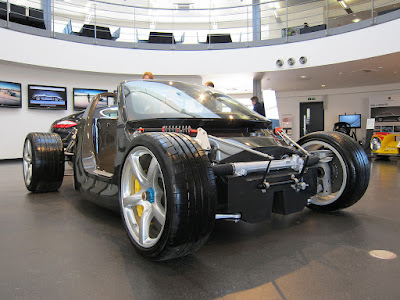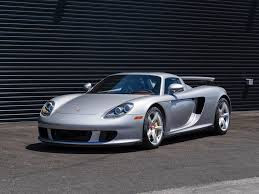Got A Spirit Dense cities, traffic jams, limited parking spaces sparked the idea of the world's car manufacturers to create small cars. If we know city cars, then there's a Swiss auto manufacturer, Micro Mobility System AG. recently introduced an even tiny car which named the Microlino.
 |
| The Microlino 2.0 electric-powered 'bubble car' posed along with the Microletta, its three-wheeled sibling. (Picture from: Microlino-Car) |
And if we look at the shape, it makes us to remind the figure of a classic tiny car called the Isetta. We will give a little information about the legendary classic tiny car. This tiny car is also commonly referred to as a “bubble car,” perhaps due to its small round shape resembling a soap bubble.
 |
| From the shape of the legendary Italian bubble car, BMW Isetta (in pictured is 1956 BMW Isetta Cabrio) then Micro Mobility System AG. was inspired to redesign a modern electric-powered vehicle named Microlino. (Picture from: Microcarmuseum) |
If you are an automotive enthusiast, you may have heard of the tiny Isetta crowded milling around on the streets of the European cities in post-World War II. Well, that's a unique shaped tiny car with a door in front. Initially, the car is designed and made by the Italian firm of Iso SpA. in the 1952. And then, the legendary tiny car was produced under licensed by many brands worldwide, ranging from VELAM, De Carlo, Romi, up to BMW, and under the last manufacturer emblem made it known famous by the name of BMW Isetta.
From the shape of the legendary Italian bubble car, then Kusnacht-based auto company was inspired to redesign a modern electric-powered vehicle. The model was first introduced in 2015, and today the development version under the name of Microlino 2.0 is being demonstrated for the first time. As we mentioned before, the car designs is based and inspired by the famous tiny car Isetta.
 |
| The Microlino 2.0 electric-powered 'bubble car' has thick retro impression, that can be seen from its classic rounded style in a more modern way. (Picture from: Carvagamza) |
It could be said, not just inspired, but it looks almost the same in all angles, except the drivetrain. And the thick retro impression can be seen from its classic rounded style but is now packaged in a more modern way. The roof is made higher to increase headroom. The A-pillar is made longer to increase visibility. But the exact dimensions were not disclosed by the automaker, only mentioned that the car has a length of 2.4 meters, means it's more compact than a small MPV.
In addition to its small appearance, another uniqueness is the access to in-out of the cabin. Like the Isetta, the source of its inspiration, the Microlino also has only one door that is used as access for the driver and passenger which is placed in front. So the car's muzzle also functions as a door. So when the door is opened, the windshield and part of the A-pillar would be opened.
 |
| The Microlino 2.0's front also functions as a door. So when the door is opened, the windshield and part of the A-pillar would be opened. (Picture from: Carmudi) |
For the exterior, the Swiss auto manufacturer makes it as simple as possible with The rear wheel tracks are made narrower than the front wheels. The car main accessories such the front and rear lights are in a straight line. Round mirrors blend with the headlights and rear fender that swallows a quarter of the wheel.
Well, when we look into the cabin, we will be surprised. Since the interior is almost empty and there is nothing, there are only a few digital devices and not many buttons. It seems that all the settings on this tiny car can be done through a single instrument panel display.
 |
| The Microlino 2.0 electric-powered 'bubble car' interior is almost empty and there is nothing, there are only a few digital devices and not many buttons. (Picture from: Carvagamza) |
The rack steer stands independently without having to go through firewalls like a “normal” car and it can be folded for easy in or out passages. Then no infotainment system, big screen or anything. So in this car all those functions can be done by using the smartphone that has been provided with a special holder on the dashboard.
This Swiss automotive company said that the Microline 2.0 was developed from the previous version by changing the material from the chassis to iron and aluminum. The axles are widened to accommodate independent suspension at the front and rear. Its electric motor is claimed to be more powerful and efficient by around 15%, but there are no further details about the power and torque.
 |
| The rear wheel tracks of the Microlino 2.0 electric-powered are made narrower than the front wheels. (Picture from: Carvagamza) |
This small car utilizes the NMC battery as its power supply which is said to be able to make it run up to 90 kph (very sufficient for city use). Furthermore, the automaker provides two battery options to drive the motor, namely 8 kWh or 14.4 kWh with a range of about 125 km and 200 km. By looking at the small battery capacity, it certainly makes it fully charged faster, and claimed that it only takes about 4 hours through a household power source.
Now for the price, the Microline 2.0 is priced starting at €12,000 (or approx Rp. 194 million), and we thought that's a quite expensive for a micro car. The Swiss manufacturer said that 17 thousand people already have ordered the car. Meanwhile for mass production, it would only start next year. We'll just have to wait...!
 |
| The Microletta electric-powered three-wheeled vehicle concept is uses two 4,2 kWh batteries. (Picture from: Carvagamza) |
Well, the Micro Mobility System also provides another vehicles called the Microletta. If the Microline is a four-wheeled vehicle, then this one is a three-wheeled vehicle with a retro style too. What's interesting, besides the shape is cute like a toy, the Microletta could be riden without the need for a driving license like a motorcycle in general.
 This three-wheeled vehicle uses two batteries with a capacity of 4.2 kWh each, making it capable of running as far as 100 km. In fact, each battery can be removed and replaced with a fully charged battery if needed. It's just that the Microletta is still a concept vehicle and is in the finalization stage. If it is completed and produced later, the price is estimated to be around €4,900 (approx Rp. 79 million).
This three-wheeled vehicle uses two batteries with a capacity of 4.2 kWh each, making it capable of running as far as 100 km. In fact, each battery can be removed and replaced with a fully charged battery if needed. It's just that the Microletta is still a concept vehicle and is in the finalization stage. If it is completed and produced later, the price is estimated to be around €4,900 (approx Rp. 79 million).The emergence of various innovations and concepts of electric-powered vehicles, indicates the seriousness of the world's automotive industry in welcoming electrification. An inevitability that will happen soon, as the use of petrol and diesel engines will be reduced or even banned in the near future.😁 *** [EKA | FROM VARIOUS SOURCES | MICROLINO-CAR | ]
Note: This blog can be accessed via your smart phone


































